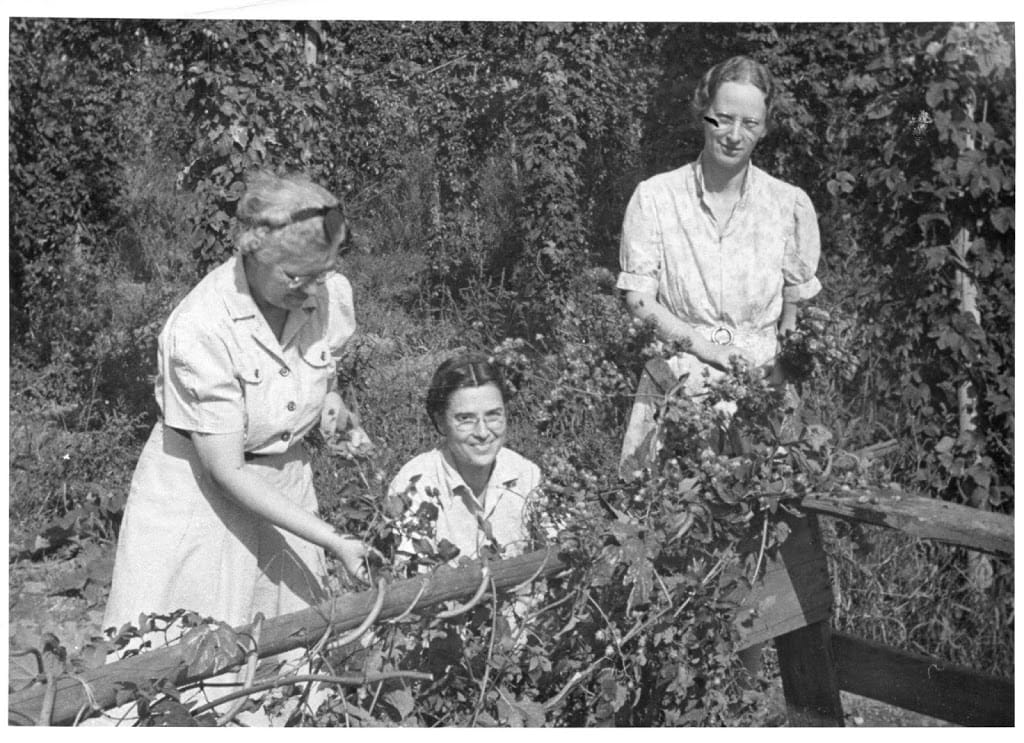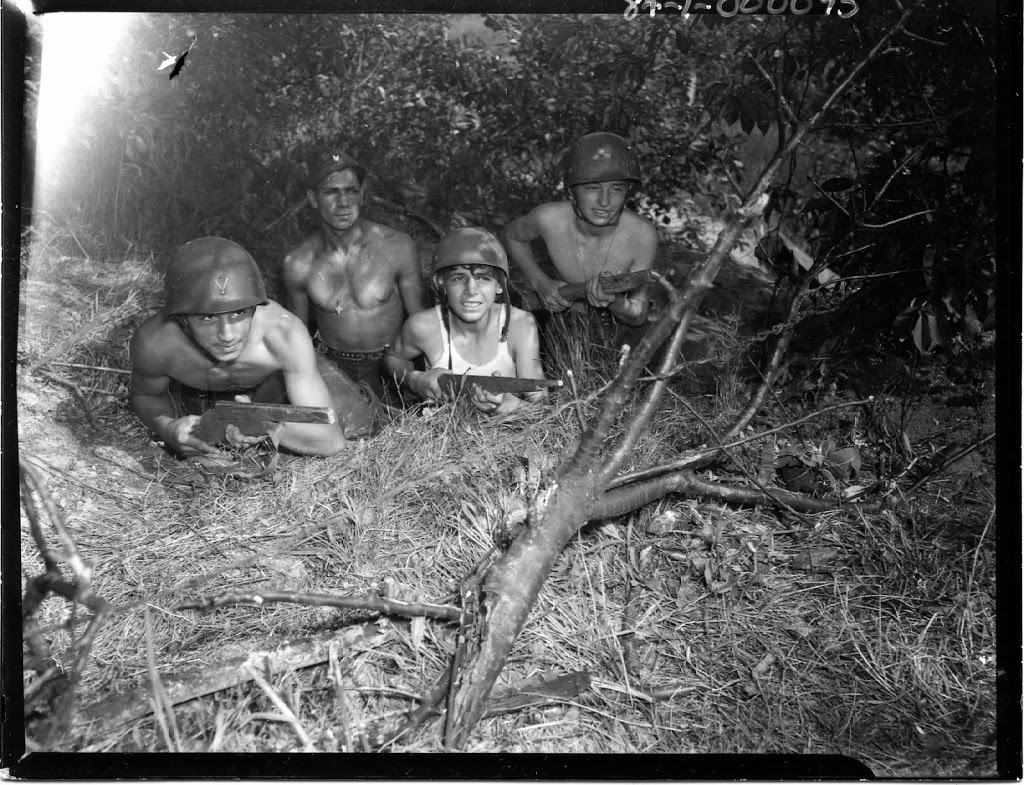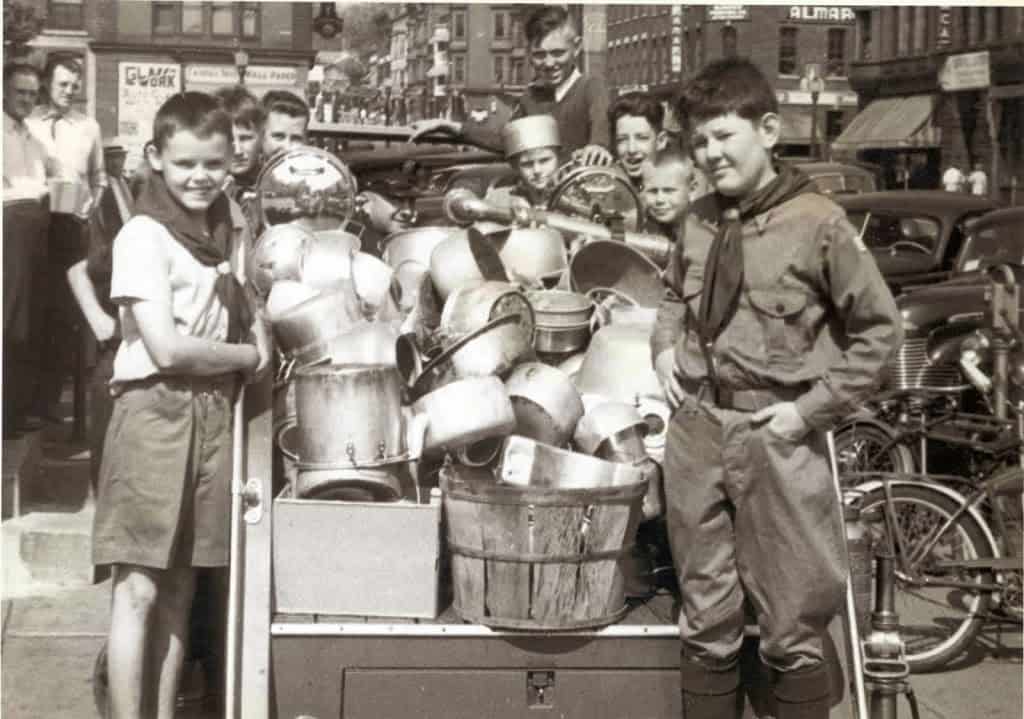World War II in the Eyes of a “Boomer”
By Karen Osburn, Archivist
The Geneva Historical Society is starting to focus more on researching Geneva during the World War II years because we have an event coming up in February highlighting the entertainment, music, and costume of the 1940s. Since I was born in the early 1950s World War II was very fresh in the memories of my parents and their friends so by process of osmosis I became more familiar with that war than some of the more recent ones during my own life.
The years after World War II ended were filled with comic books, novels, television programs and newspaper articles about the War. My cousin, who was 10 years older than I, had an enormous collection of comics that I was allowed to read if I was very careful (and sometimes very sneaky) and many of them dealt with combat situations. I remember sitting on the living room rug and quietly listening to my dad and his friends discuss their experiences in the War. Since I was present they were never explicit about traumatic events, I can’t recall them ever even mentioning shooting or being shot at much less killing someone, but they did talk about things that happened from which they were able to extract some humor. I think they forgot at times I was there and when that happened they were a bit harsher with their criticisms of the officers in charge of their units. If I was really quiet I might even add a few words to my vocabulary that I didn’t dare use, but were interesting to know.
 |
| Geneva teachers helping with the harvest |
When I mentioned the era was filled with television programs having to do with war, I mean full! A quick look at Wikipedia found eight military programs dealing with World War II airing in 1962 alone. That count is probably off because I didn’t recognize some of the titles, but I will mention just a few of the ones that appeared regularly on our family television:
Combat! (1962 – 1967)
12 O’clock High (1964 – 1967)
The Gallant Men (1962 – 1963)
No Time for Sergeants (1964)
Hogan’s Heroes (1965 – 1971)
McKeever and the Colonel (1962 – 1963)
McHale’s Navy (1962 – 1966)
Hennessey (1959 – 1962)
Ensign O’Toole (1962 – 1963
Convoy (1965 – 1966)
As a child, I really enjoyed these shows. I loved the comedies not knowing at the time that the War experience may have humorous incidents, but as a whole, is not funny. I also loved the dramas, romanticizing the soldiers. I grew up in a neighborhood where all of the children my age were boys (except me of course), so we played “soldier” when we weren’t playing cowboys and Indians. I could lob a dirt clod grenade with the best of them and many a night saw me coming in the house covered with dust and with my fingernails grimy from mining the garden for appropriate size dirt balls to thrown at the boys next door. I think our “war” came to a screeching halt the day one of them hit me with a dirt covered rock he had mistaken for a clod. I may even have used one of those “special occasion” words I learned watching TV with my father and his friends.
 |
| Angelo Street boys |
Now that I am older, and TV programs about almost any war are generally shown on PBS and done by someone like Ken Burns, I perceive war for what it really is, a frightening breakdown of civilized discourse brought on by greed, fear and hatred and acted out with a tremendous loss of life and property. There is very little romance or comedy involved.
How did the children of Geneva see World War II? We have pictures of the young men on Angelo Street having “war exercises”. There are also photos of scrap metal collections done by the children of the city. One book, Kathryn Grover’s Close to the Heart of the War: Geneva in WWII mentions teenager boys working a midnight to 2pm shift at American Can. Though I haven’t found reference to their feelings on the subject, rationing must have had an impact on how children ate. With items like meat and sugar being rationed I suspect there were some interesting substitutes for cookies, hot dogs, sausages and meatloaf. I was looking through a war time cookbook which had a recipe for preparing parsnips as a substitute for bananas! There was also a recipe for potato chocolate candy, and a brown butter soup. The soup had no meat or meat juice in it at all. I suspect the closest it came to meat was if a bird flew over a house while it was being prepared.
I can’t imagine going to bed every night hoping my father would come home from the war in one piece, or watching my mother be afraid. I know my own dad often told me he was glad he had daughters so he would not have to see us go off and fight.
 |
| Students at St. Francis DeSales with their War Saving Stamp books |
Close to the Heart of the War also includes images of children collecting for metal drives, collecting milkweed pods for life preservers, and participating in the war bond program. Some younger folks worked in the farm fields in the summers because of lack of labor due to the draft and jobs with high priority during war time. I worked hard around the house as a child because my folks did not believe in being idle, but I can’t imagine what it would feel like to get out of bed at 11 P.M. and go to work for 12 hours, then come home and try to go to sleep so I could do well in school. Just the thought of these things makes my entire life feel very privileged.
Looking back on my childhood I realize how we never feared being hungry and cold, while children in Europe were still starving and living without basic necessities of life, like a dry place to spend the night, fresh water, fresh food, or clean clothes. They didn’t portray that on TV!
 |
| Boy Scouts outside City Hall |
There are as many different views of Geneva during and after the war as there were people who experienced it here. I have only touched on a couple, but if you would like to know more Close to the Heart of the War: Genevaduring World War II can be purchased through our website.
